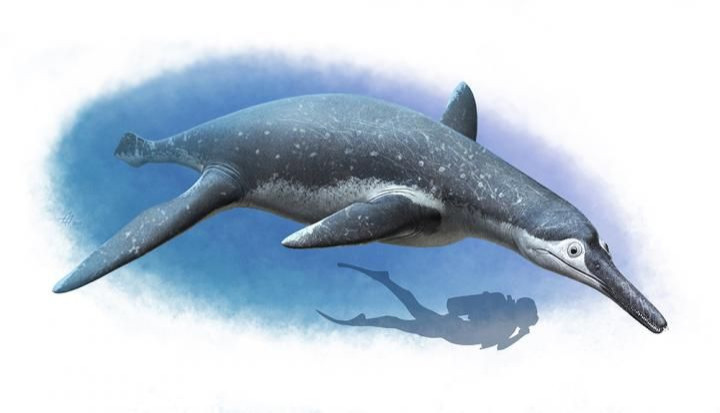Dinosaur Evolution: Skeleton Shows Diversity Of Marine Reptiles

Russian scientists have discovered a dinosaur species that lived in the water and which they have called “highly unusual” — it’s something straight out of Mongolian mythology.
The pliosaur lived about 130 million years ago during the early Cretaceous Period, and, a study in the journal Current Biology found, it represents an evolutionary step between the species of its kind that lived during the Cretaceous and the ones that lived in the period just before that, the Jurassic. It also paints a picture of a group of reptiles that were much more diverse than previously thought.
Read: What Do We Know About Dinosaur Sex?
Pliosaurs are marine dinosaurs known for their short necks and huge heads. But the study found the new fossil shows a cranial structure that is closer to a different group called polycotylids, defined by their more elongated heads and smaller teeth. Pliosaurs had large heads and teeth because they were eating large prey, but the shape of this particular one’s head suggests it was eating fish and squid.
“This underscores the ecological diversity of [pliosaurs] and reveals a more complex evolutionary history,” the study says — one that has more layers than their single “iconic representation as gigantic apex predators of Mesozoic marine ecosystems.”

In addition to their massive heads anchored on comparatively stumpy necks, pliosaurs are known for having big teeth and strong jaws. They lived in prehistoric seas all over the globe, including locations around modern-day Europe, the Americas and Australia.
The skeleton of this new pliosaur, Luskhan iitilensis, was found in 2002 on the shore of the Volga River in western Russia. Its name is a tribute to Mongolian mythology, referencing a “spirit and master of water” known as “luus-khan” as well as using the ancient name for the river, “Itil.”
Read: Will Jurassic Park Ever Happen in Real Life?
The fact that its head structure is so close to a different group of marine dinosaurs, the long-headed polycotylids, is an example of what’s called convergent evolution, in which unrelated animals evolve similar characteristics because they are adapting to similar environments. This effect can be seen particularly in winged creatures like insects and birds.
“The new discovery has shown that ecomorphological diversity of pliosaurs was wider and their evolutionary history is more complicated than previously thought,” study co-author Nikolay Zverkov, from Lomonosov Moscow State University, said in a statement.
They weren’t just the top predators feasting on big prey; they were also snacking on medium-size meals.
“For a long period of time there has been almost no information, concerning the Early Cretaceous pliosaurs,” Zverkov said. “However, the discoveries of the last years allow to close this gap.”
© Copyright IBTimes 2024. All rights reserved.





















